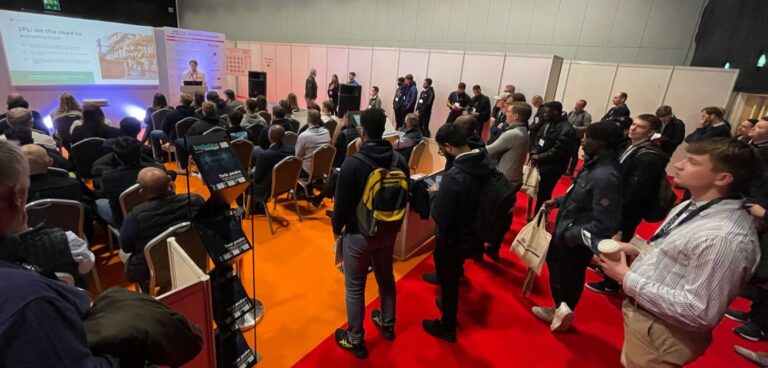Robotics and Automation Exhibition, part of the Akabo Media group alongside Logistics Manager and IntraLogisteX, is currently taking place at the CBS Arena in Coventry and features many familiar names to the warehousing sector.
On Day 1 of this year’s Robotics and Automation Conference a host of speakers provided technical presentations and case studies detailing the use of robotics and automated technologies in end-user operations.
During the morning session of the conference, James Hart, Business Development Manager, EMEA, Lucas Systems provided an overview of the principal tasks and workflows that combine robots and people. He described how AI tools can be used to optimise this integration and as a result support distribution centre objectives.
This was followed by Greg Downey, Robotics Business Consultant at Wise Robotics, who posed an important question: how ready is the UK warehousing industry for the robotic revolution? As well as giving a presentation that delivered a top-level view of warehouse automation opportunities across multiple industries, Downey also distributed a complimentary copy of Wise Robotics’ latest report to the standing-room only conference theatre audience.
Pilz Automation Product Manager David Collier took to the lectern next with a talk on how to make robotic applications safe. He focused on key requirements, risk assessments and safeguarding of robotic systems.
At noon, Ben Adeline, CEO of Insphere discussed what the limitations of industrial robots are, and how this impacts smart factories. He considered the benefits of a data-driven approach and whether this can increase automation flexibility, as well as performance.
Chrissie Kemp, Head of Intelligent Automation, at InDigital, Jaguar Land Rover (JLR), then provided a case study on the car manufacturer’s digital transformation.
She discussed how a digital workforce is transforming the company’s employee and customer experience and explained how JLR is leveraging hyper automation technologies to unlock value for its buyers and supply-chain analysts.
“We’ve not been going all that long, about two or three years, but we’ve got more than 86 robots that work alongside our human workforce carrying out more than 40,000 transactions a week, generating more than 100 million plus points of data that we didn’t have access to before,” said Kemp.
“This provides us with invaluable actionable insights with analytics on top of that which help us to keep learning, growing and improving. We’ve also got a further 200 bots in the background, which has led to more than £1 billion in risk mitigation for the business and £100 million in financially approved cost savings.”
Session attendees were then joined by Khaled Al Khudir, Assistant Lecturer in Manufacturing Simulation and Robotics at Coventry University. In this talk, Khudir discussed the potential role of collaborative robots in the fourth industrial revolution, including current innovative research solutions and their main challenges. On the concept of industry versus research, he told the audience, “I don’t know why lots of people think that they are enemies when they actually collaborate with each other.”
In the penultimate presentation of the day, Nathan Ghundoo, Head of Marketing at Schneider Electric, provided two smart factory case studies – one from Flint, North Wales, and another from its Vaudreuil plant in France, which was recently recognised by the World Economic Forum as a “lighthouse” factory.
“The lighthouse term is really shining the way for IoT and industry, so that other factories can see and take solutions from. That’s down to our openness in terms of what we’ve done, what we’ve learned, what we failed at and why we we’ve succeeded.”
The next speaker also championed openness and shared learnings. Yvan Petillot, Academic Lead at the National Robotarium, based at Heriot-Watt University, stressed that for robotics research to support industry “it needs to be multidisciplinary, it needs to be collaborative”.
Petillot explained the work of the National Robotarium is to bridge the gap between academia and industry. The research centre, which is due to open in March 2022, will enable companies from a range of industries, including off-shore, construction and eventually automation, to bring problems to be solved.
“It’s a place where we work to bring teams of academics, engineers and end-users together to work on the product for a number of years,” he said.







